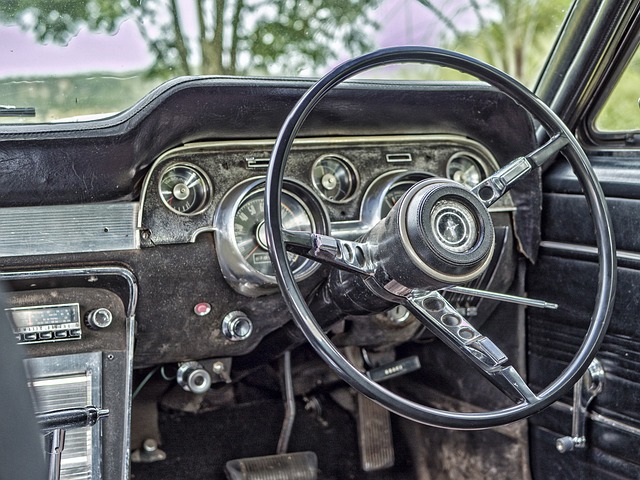Looking to register your car in California? This comprehensive guide walks you through every step, from understanding key requirements for car registration in California to completing the DMV vin verification process. We’ll help you gather necessary documents, prepare your vehicle, and navigate the registration process seamlessly. Additionally, learn post-registration tasks like insurance, tags, and maintenance to ensure a smooth ownership experience.
- Understand the Requirements for Car Registration in California
- Gather Necessary Documents for DMV Vin Verification
- Prepare Your Vehicle for Inspection and Title Transfer
- Complete the DMV Registration Process Step-by-Step
- Post-Registration Tasks: Insurance, Tags, and Maintenance
Understand the Requirements for Car Registration in California

Before you begin the registration process, it’s crucial to understand the requirements for car registration in California. The California Department of Motor Vehicles (DMV) has strict guidelines that all vehicle owners must adhere to. One of the primary steps is ensuring your car passes a thorough inspection, which includes a DMV vin verification. This involves checking the Vehicle Identification Number (VIN) to verify its authenticity and ensure the car meets safety standards.
Additionally, for convenience, many California residents opt for mobile vin verification or mobile vin inspection services. These services allow you to have your vehicle’s VIN checked on-site, often at a time and location that suits you. This alternative approach can streamline the registration process, making it more efficient and accessible.
Gather Necessary Documents for DMV Vin Verification

Before you can register your car in California, you’ll need to go through a crucial step: dmv vin verification. This process involves ensuring that your vehicle’s unique identifier—the Vehicle Identification Number (VIN)—matches the records held by the Department of Motor Vehicles (DMV). To make this smoother, gather all necessary documents, including your car’s title, registration papers from any previous state, and proof of insurance. Additionally, consider having a mobile vin inspection or using a mobile vin verifier to streamline this process; these services can help you verify your VIN quickly and conveniently.
For the dmv vin verification, you’ll need to visit a local DMV office with all required documents. They will cross-reference your VIN with their records to ensure everything aligns, which is essential for legal registration. Having accurate and up-to-date information on hand can significantly speed up this process.
Prepare Your Vehicle for Inspection and Title Transfer

Before you can register your car in California, ensure your vehicle is ready for inspection by making any necessary repairs and maintaining a clean interior and exterior. You’ll also need to have your Vehicle Identification Number (VIN) verified, which is a crucial step in the registration process. Consider arranging a mobile VIN inspection or mobile VIN verification to make this task more convenient, as the California Department of Motor Vehicles (DMV) offers these services for added flexibility.
During this preparation, double-check your vehicle’s documentation, including the title and any registration papers. Ensure they are in order and accurately reflect your ownership status. This step is essential as the DMV will require these documents during the registration process. A vin inspection ensures that all details match, preventing potential delays or issues with your car’s registration.
Complete the DMV Registration Process Step-by-Step

Following a thorough inspection of your vehicle’s history and documentation, it’s time to complete the DMV registration process. Here’s a step-by-step guide to ensure a smooth experience in California. Start by gathering all necessary documents, including your driver’s license, proof of insurance, and current vehicle registration (if applicable). Next, visit a local California DMV office or use their online services for an efficient digital process.
For a seamless transaction, perform the DMV VIN verification early on. This involves checking the Vehicle Identification Number (VIN) accuracy and matching it against the vehicle’s records. You can do this manually or utilize a mobile VIN verifier for quicker, on-the-go inspection. Once your documents are in order and the VIN is confirmed, proceed with filling out the registration application, providing detailed information about your vehicle, and paying the required fees.
Post-Registration Tasks: Insurance, Tags, and Maintenance

After successfully registering your vehicle with the DMV, there are several important post-registration tasks to complete. The first is securing proper insurance coverage. California requires all vehicles to be insured, and specific minimum levels must be met. This includes liability insurance to protect against potential accidents and damage claims. You can choose between different types of insurance plans tailored to your needs and budget.
Additionally, you’ll need to obtain vehicle registration tags and ensure regular maintenance checks. Tags, or license plates, are a vital part of identifying your vehicle on California roads. They must be displayed prominently on the rear of your car. Moreover, regular maintenance is crucial for keeping your vehicle in safe operating condition. Consider using a mobile vin inspection service or a trusted mechanic to conduct routine checks and address any potential issues promptly. Remember that proper insurance, tags, and maintenance are not just legal requirements but also ensure the safety of you, your passengers, and other drivers on the road.
Registering a car in California involves understanding state requirements, gathering essential documents for DMV VIN verification, preparing your vehicle for inspection and title transfer, and completing a step-by-step registration process. Once registered, don’t forget post-registration tasks like obtaining insurance, displaying tags, and maintaining your vehicle. By following these steps, you’ll ensure your car is legally compliant and ready to hit the California roads.
